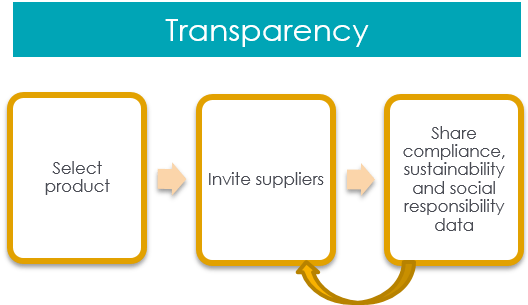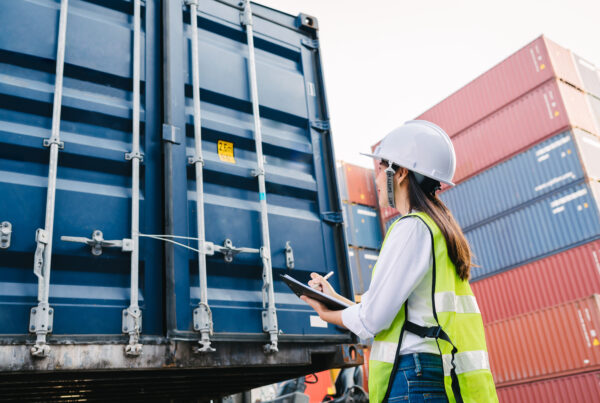Updated: September 27, 2024
Transparency and traceability are often used interchangeably, but they are in fact two different concepts. Many people refer to “traceability” when they actually want transparency—and vice versa. Understanding the difference between the two is key for developing a supply chain management strategy to capture and communicate the right information.
Transparency: Mapping the Supply Chain
 Transparency captures high-level information regarding a supply chain: a product’s components, names of suppliers, locations of facilities, associated certifications, etc. But “high-level” does not mean vague. Through transparency, businesses can identify the all suppliers for all the components in a product, down to the source, as well as capture specific information related to these suppliers—such as a facility’s certifications, certifying body, expiration date, and even a copy of the certification itself.
Transparency captures high-level information regarding a supply chain: a product’s components, names of suppliers, locations of facilities, associated certifications, etc. But “high-level” does not mean vague. Through transparency, businesses can identify the all suppliers for all the components in a product, down to the source, as well as capture specific information related to these suppliers—such as a facility’s certifications, certifying body, expiration date, and even a copy of the certification itself.
Transparency also enables companies to identify, map, and connect with their supply chain network to collect previously unknown product information and/or communicate and establish specific requirements. In this way, companies can gain better visibility of their global supply chains and ensure compliance with safety, sustainability, and social responsibility requirements.
Implementing the tools necessary to achieve transparency can be done with relatively low impact on existing processes and systems. Once the right solution is found, it can be used for all product types and easily scaled up to meet the needs of global supply chains.
Traceability: Capturing Granular Data
On the other hand, traceability captures much more granular information about a particular ingredient or component, such as batch-lot data (catch/harvest date, field data, etc.), purchase order (PO) data, and other operational information. The focus is less on mapping the entire end-to-end supply chain but on following certain batches of components or purchase orders as they move through the supply chain. This is particularly useful when, for example, a recall is necessary; the ability to identify a specific impacted batch of components can greatly reduce the overall scale of the recall.
In addition, traceability is key for engaging with consumers. With traceability, brands and retailers can collect data for specific batch-lots or POs to share information specific to a given product. For example, European retailer Intermarché collected traceability-level data for their private label green beans to share product details such as country of origin, packing date, and delivery date with consumers.
Given the granular nature of traceability, processes for gathering this information are more difficult to scale and often require system developments and interruptions to established rules and processes (boxes 1-3 in the diagram below).

Importantly, traceability relies on transparency: without transparency, more detailed information such as batch or PO data is virtually impossible to gather. How can you access this operational data without knowing who is in your supply chain and which of your supply chain partners collects this information? How do you share this data without a means of getting it to the right supply chain players? Transparency must come first before more granular, detailed information can be collected.

How Transparency-One Can Help
The Transparency-One platform now has the capability to capture both supply chain mapping data (transparency) as well as operational data (traceability). Companies can elect to map their supply chains to gain a better understanding of their products and suppliers, while also capturing batch or PO data for specific components of a specific product. With the Transparency-One solution, companies can:
1. Arm your company with tools to achieve supply chain mapping (transparency)
As cloud-based solution, Transparency-One can be used to start gathering supply chain mapping information from Day 1, and scale up as needed.
2. Achieve the means to collect operational data from their suppliers (traceability)
Transparency-One’s global network connects entire supply chains and makes it easy to connect, collaborate, and share even the most detailed operational data.
3. Store both supply chain mapping and operational data in a single, collaborative platform
Companies can choose their desired level of granularity for each product and for each component, and store everything in Transparency-One.
4. Leverage blockchain for the most sensitive supply chains and information
Data stored in the Transparency-One platform can be pushed to the blockchain to provide an extra layer of security for sensitive or critical supply chain data.











